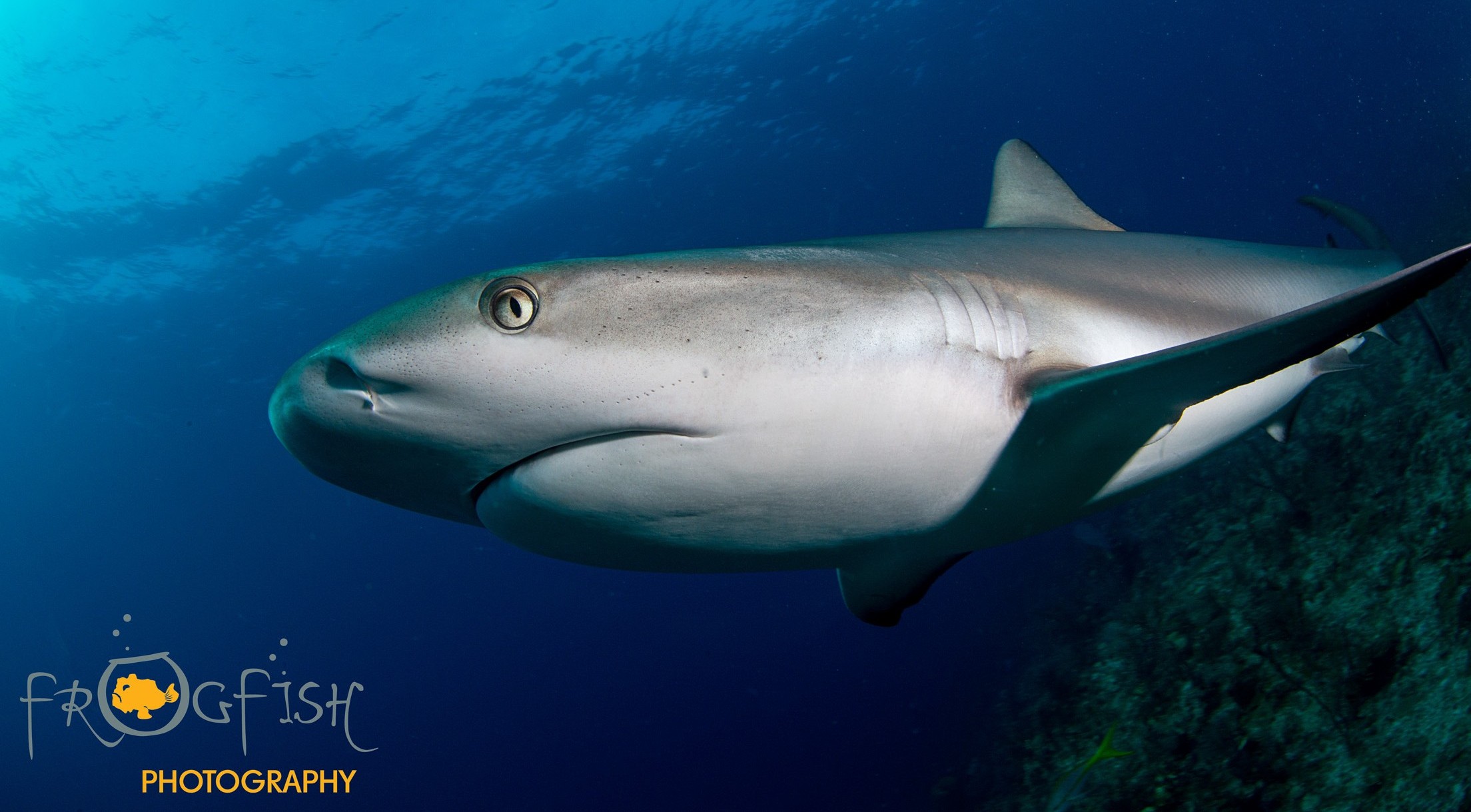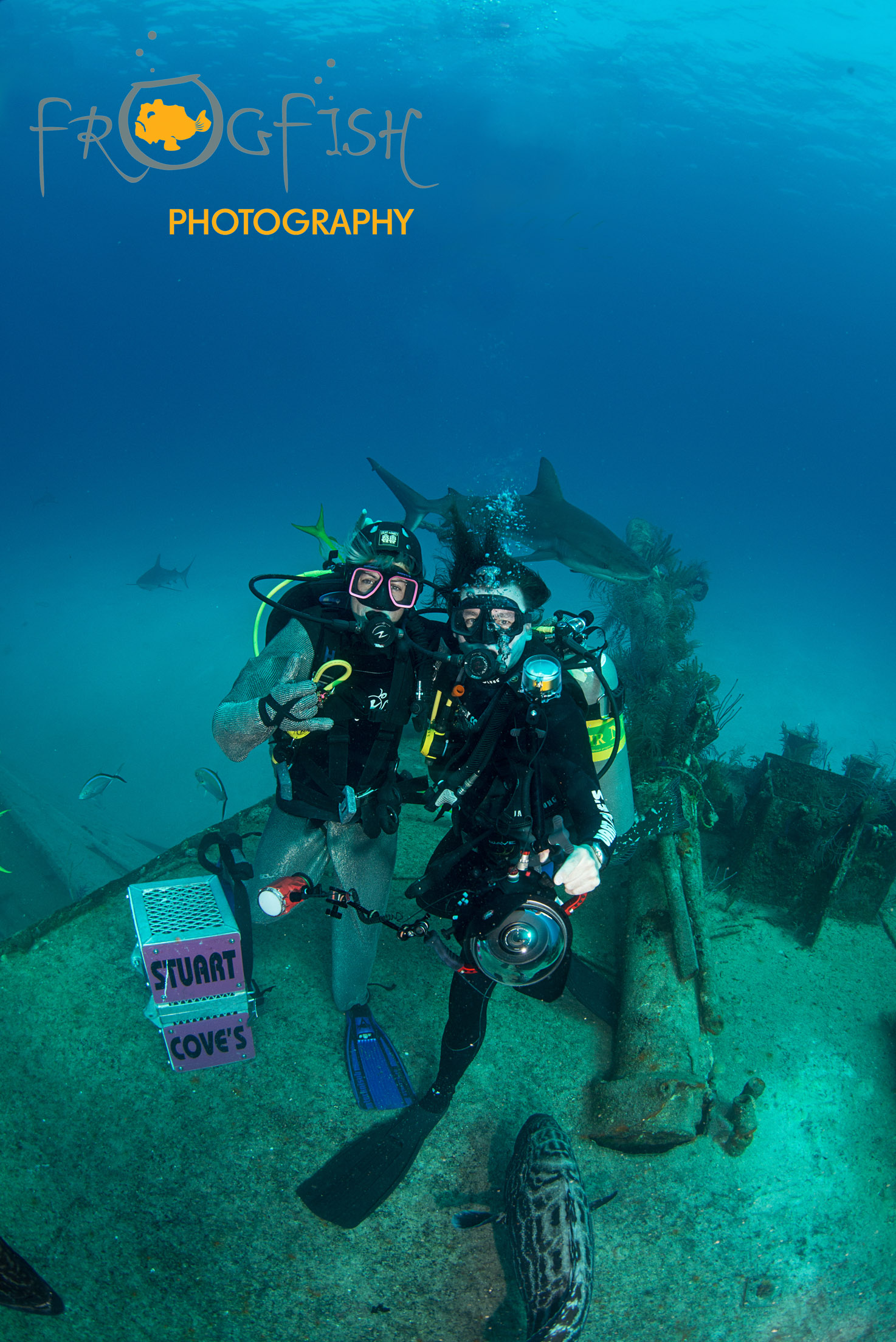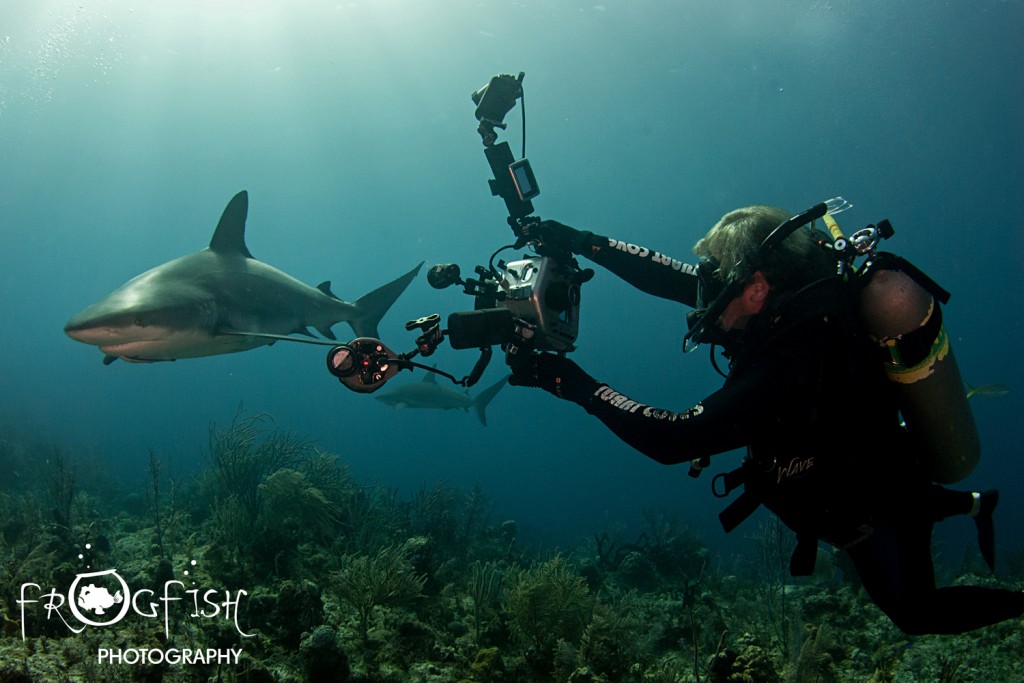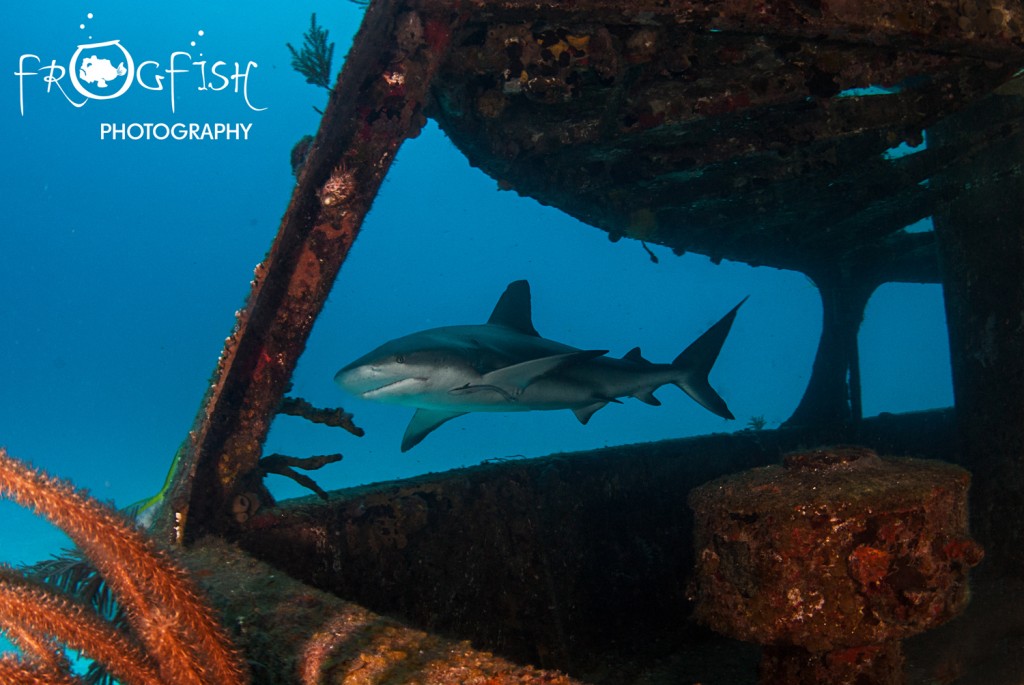News
Photographing Caribbean Reef Sharks in Nassau, New Providence, Bahamas

 On our second piece about photographing sharks in the Bahamas, we head to New Providence Island, to dive out of Nassau with Stuart Cove. This dive centre is probably the most famous in the Bahamas, and perhaps even the whole Caribbean. Stuart originally opened the centre in 1978 and it has grown into a really impressive operation. Whilst it is a large dive centre, with lots going on, it does not feel like it when you arrive. The staff are all friendly and professional and so you feel comfortable and at home right away. We were greeted by Stuart himself, before grabbing our gear and jumping onto a boat to go and dive with Caribbean Reef Sharks.
On our second piece about photographing sharks in the Bahamas, we head to New Providence Island, to dive out of Nassau with Stuart Cove. This dive centre is probably the most famous in the Bahamas, and perhaps even the whole Caribbean. Stuart originally opened the centre in 1978 and it has grown into a really impressive operation. Whilst it is a large dive centre, with lots going on, it does not feel like it when you arrive. The staff are all friendly and professional and so you feel comfortable and at home right away. We were greeted by Stuart himself, before grabbing our gear and jumping onto a boat to go and dive with Caribbean Reef Sharks.
There are a number of different types of shark diving here. You can photograph them on the reef, cruising over colourful corals in shallow water. You can photograph them on and around wrecks, which have been sunk deliberately to create new habitats for the marine life and a playground for divers and underwater photographers alike. You can also dive with a shark wrangler on a shark feeding dive, who will feed small pieces of fish to the sharks via a long metal stick. We tried all three and each offers different photographic opportunities.
The reef dive is great for those who want to try this for the first time, and want a more chilled out experience. A metal box with a few fish heads inside is placed on the seabed, away from any delicate coral. The sharks are attracted in by the smell and will cruise around the area. You can then find the most photogenic area, where you want to photograph a shark, and wait. We had around 10 sharks on this dive for a full 80 minutes. We photographed divers with each other alongside the sharks, the sharks out in the blue, as the reef dropped away from the shallows, and also by some beautiful sea fans to show them in their natural environment.
 However, our favourite dive was the wreck dive. Once again, a bait box was taken down by the guide, but this time it was hidden deep inside a small wreck called Big Crab. Again the sharks were attracted in by the smell, and this resulted in a dozen or so reef sharks circling the artificial reef. It made for some wonderful photography. The wreck is in shallow water (less then 10m I think) and the water was warm, blue and clear. We could have stayed there all day! You could shoot from inside the wheelhouse of the wreck looking out through the windows and catching a shark as it cruised past, or you could shoot from outside the wreck to catch the full dramatic effect.
However, our favourite dive was the wreck dive. Once again, a bait box was taken down by the guide, but this time it was hidden deep inside a small wreck called Big Crab. Again the sharks were attracted in by the smell, and this resulted in a dozen or so reef sharks circling the artificial reef. It made for some wonderful photography. The wreck is in shallow water (less then 10m I think) and the water was warm, blue and clear. We could have stayed there all day! You could shoot from inside the wheelhouse of the wreck looking out through the windows and catching a shark as it cruised past, or you could shoot from outside the wreck to catch the full dramatic effect.
Our final dive was the shark feeding dive. This is an adrenalin rush of a dive, as the sharks are moving more quickly and come very close as they position themselves in the hope of getting a fishy snack from the feeder. The “wrangler” will wear chainmail for this dive for protection from accidental nips from overexcited sharks. A piece of fish is taken out of the bait box, one at a time, on the end of a metal stick, and raised up into the water column for a shark to grab. Whilst I preferred the wreck dive, this is a fantastic dive to get great shots with sharks and divers together in the water.
All too soon, it was time for us to move on to the next island for some more shark diving. Next time we visit Grand Bahama to look for tiger sharks and to spend a hard-earned day off playing with stingrays.
Further Information
For more from Nick and Caroline, visit www.frogfishphotography.com.
Gear News
Introducing the TR-80, IR-50 and CS-30 Regulators from DYNAMICNORD

Whether you are a beginner or a professional diver – with the three new main regulators from DYNAMICNORD, everyone will find their favourite regulator. They all look super stylish.
Excellent performance with the TR-80
Quality and performance are the be-all and end-all for regulators. It is not for nothing that the TR stands for Tec Reg. The innovative design of the TR-80 guarantees absolute reliability – even in ice-cold waters.

Perfect breathing effort at 0.8 J/l / certified for diving in waters below 10 degrees / structural design made of solid brass for best cold protection / membrane-compensated design with dry seal of the first stage / reduced exhalation effort thanks to optimized exhalation membrane and bubble deflector / adjustable Venturi (dive/predive) and adjustment knob for individual inhalation comfort / innovative design of the front cover prevents free-flow in strong currents or when diving with scooters / design made of sandblasted brass, matt chrome finish / 2 HP and 4 LP outlets / mouthpiece made of high-quality, anti-allergic silicone for maximum comfort.


Amazing underwater adventures with the IR-50
The IR-50 is the top regulator for advanced and experienced divers. Natural breathing is the essence of this regulator.

Ideal breathing effort at 0.8 J/l /certified for diving in waters below 10 degrees / compensated membrane / adjustable venturi (dive/predive) and adjustment knob for individual inhalation comfort/ outlet valve and deflector for minimum exhalation effort and reduction of bubbles on the face / design made of sandblasted brass, matt chrome finish / 2 HP and 4 NP outlets / mouthpiece made of high-quality, anti-allergic silicone for maximum comfort.


The Workhorse – our CS-30
For diving centres and diving beginners – the workhorse stands for strong construction, reliability and robustness. Perfect for your training.

Optimal breathing effort at 0.8 J/l /recommended for diving in waters above 10 degrees / non-compensated piston / adjustable venturi (dive/predive) / outlet valve and deflector for minimum exhalation effort and reduction of bubbles on the face / design made of sandblasted brass, matt chrome finish / 1 HP and 3 NP outlets / mouthpiece made of high-quality, anti-allergic silicone for maximum comfort.


Octopus OP-30
The OP-30 is the ideal addition to all DYNAMICNORD regulators. It is identical in construction to the CS-30.

The TR-80, IR-50, CS-30 (DIN & INT) regulators and the Octopus OP-30 are available from DYNAMICNORD dealers and in the online store.
DYNAMICNORD – Your Outdoor Companion.
Marine Life & Conservation
Paul Watson Released as Denmark Blocks Japan’s Extradition Bid

Renowned anti-whaling activist Paul Watson has been released from custody in Greenland after spending five months in detention. Denmark’s Justice Ministry rejected Japan’s request for his extradition, citing insufficient guarantees that his time already served in custody would be credited against any potential sentence.
The 74-year-old Canadian-American was arrested on July 21 in Nuuk, Greenland’s capital, when his ship docked to refuel. His arrest was based on a 2012 Japanese warrant related to a 2010 encounter in Antarctic waters. Japan alleged Watson obstructed operations and caused damage to a whaling research ship during efforts to disrupt illegal whaling. Watson has consistently denied these claims, maintaining his commitment to marine conservation.
Denmark, which oversees extradition matters for Greenland, concluded that while the legal conditions for extradition were met, the lack of assurances from Japan regarding time-served credit made extradition untenable.
In a video shared by his foundation, Watson expressed gratitude and relief, saying, “After five months, it’s good to be out… and good to know they’re not sending me to Japan.” He added that the most difficult part of his time in custody was being separated from his two young sons.
Watson is a pioneering figure in marine conservation, known for founding the Captain Paul Watson Foundation in 2022 after decades of activism with the Sea Shepherd Conservation Society. His bold efforts to defend marine life have earned him widespread support, including from celebrities and conservationists. His work has also been featured in the acclaimed reality TV series Whale Wars.
Watson’s lawyer, Jonas Christoffersen, praised the decision, stating, “We are happy and relieved that Paul Watson is now free.” He added that Watson is eager to reunite with his family and continue his vital work.
The arrest occurred while Watson’s vessel, the M/Y John Paul DeJoria, was en route to the North Pacific with a team of 26 volunteers to intercept a Japanese whaling ship. His foundation described the arrest as politically motivated and emphasized that Watson’s actions were focused on ending illegal whaling practices.
Japan resumed commercial whaling in 2019 after leaving the International Whaling Commission, asserting that whale meat is a cultural tradition. Conservationists, however, continue to challenge these practices, highlighting their impact on marine ecosystems.
Despite the challenges, Watson remains steadfast in his mission to protect marine life and bring attention to whaling practices. His dedication to ocean conservation has made him a globally respected advocate for the environment.
-

 News2 months ago
News2 months agoIconic SS United States to become the World’s Largest Artificial Reef
-

 News3 months ago
News3 months agoBook Review – 52 Assignments: Underwater Photography
-

 Gear News3 months ago
Gear News3 months agoDYNAMICNORD – New German diving brand enters the British market
-

 News3 months ago
News3 months agoExploring Cenote El Pit: A Diver’s Dream
-

 Gear News3 months ago
Gear News3 months agoTry BARE drysuits (and maybe even win one!) this Friday with Sea & Sea at North West Dive Fest
-

 Marine Life & Conservation3 months ago
Marine Life & Conservation3 months agoBook Review: Coral Triangle Cameos
-

 Blogs2 months ago
Blogs2 months agoDive the Egyptian Red Sea this Autumn with Regaldive
-

 News3 months ago
News3 months ago2024 Ocean Art Underwater Photo Competition Announced






